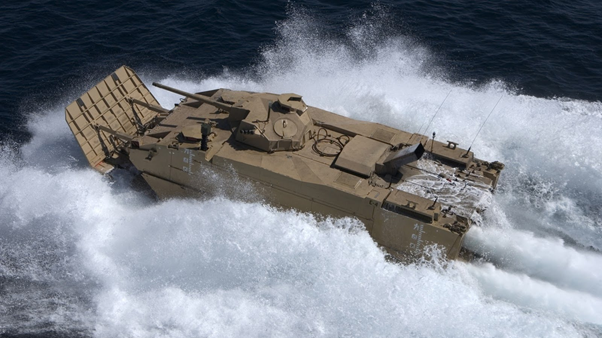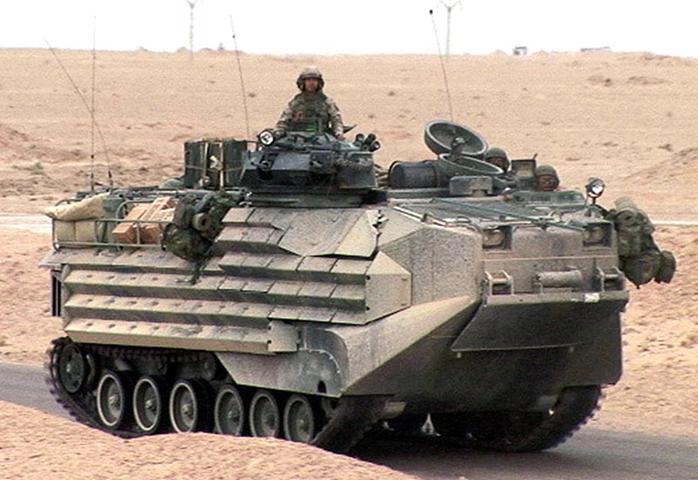
Only a day on from IR release to the first big land news – reports via @FTusa284 yesterday that Rheinmetall confirmed Challenger 2 LEP awarded, official details TBC but 148 tanks looks good
A thread on whaqt LEP is, largely taken from my feature on it last month for @JanesINTEL
A thread on whaqt LEP is, largely taken from my feature on it last month for @JanesINTEL

A Pocket History: LEP, like all UK programmes, has a lengthy backstory but in the contemporary space emerged in 2013 as a pure obsolescence management project, replacing equipment that was no longer manufactured or supported and extending functional life without capability lift 

With this modest scope, the UK Ministry of Defence (MoD) issued two GBP23 million (USD31.23 million) assessment phase contracts in December 2016 to BAE Systems and Rheinmetall Landsysteme for the development of digital prototypes.
October 2018 BAE System unveiled (exclusive to Janes @SamCranny) Black Night (name referencing enhanced night-fighting) concept for the requirement. It addressed specific requirement – obsolescence management. Only extra was provision for mounting Elbit Iron Fist at a later date 



A few months later In January 2019 Rheinmetall unveiled their bid, a larger-scale overhaul beyond the bounds of the LEP requirements, featuring all-new fully digital electronic architecture-based turret mounting Rheinmetall’s 120 mm smoothbore cannon 

Rheinmetall stated that this turret had been developed independently outside the funding of the LEP programme, with the new turret being a required change to properly accommodate the smoothbore gun. 

In July 2019 Rheinmetall BAE Systems Land (RBSL) was formed at BAE Systems factory in Telford between the AFV businesses of Rheinmetall Defence UK (55%) and BAE Systems Land UK (45%). RBSL is one of the two tier-one suppliers and manufacturers of Boxer as well 

Having considered the expanded option offered by the now RBSL team, the British Army revised its requirements to align with the product offered, which were dubbed LEP+ to delineate it from the earlier smaller scope programme.
That left the RBSL ‘LEP+’ bid as the only bid standing, and with no viable alternatives it appears to have won the uncontested fight for the requirement at long last, though ofifical details yet to emerge at time of writing 

So, whats in the LEP upgrade? I’ve broken the key headline items into the big three areas – firepower, protection, mobility. 

FIREPOWER: Headline change is swap from L30A1 rifled gun to Rheinmetall L55A1 smoothbore. This has two significant considerations. First is the gun is A1 standard of L55, the latest development being installed in German Leopard 2A7V and big lift in muzzle velocity and penetration 

Second is a change to single-piece ammunition from the UK 2-piece suite (technically 3-piece owing to the separate primer). This enables UK to fire NATO standard smoothbore ammo, including latest DM63 and DM73 as well as DM73Neo, formerly KE2020, APFSDS-T rounds.
US has also provisionally confirmed M829A4 depleted uranium (DU) penetrator APFSDS round could be qualified rapidly for use from IOC. UK currently uses L27A1 CHARM 3 round in existing L30A1 gun and may be keen to retain a DU-based round for enhanced performance with its new gun. 

Using NATO-standard round is expected to bring cost savings for buying training ammunition and ‘war rounds’, as well as collaborative R&D of future ammunition natures, the latter by the UK joining the German/US-led International Joint Configuration Board for 120 mm weapon systems
Rounds stored in now industry-standard isolated bustle compartment with blow-out panels in event of penetration. Compartment holds 15 rds with a further 16 in hull storage, for total of 31. Compares with 49 in the CR2, enabled by the easier storage of smaller 2-part components 

In terms of optics and targeting, LEP will use the same sights as AJAX, the Thales ORION and DNGS T3 (comamder/gunner), therefore gaining some parts commonality with consequent logistic and cost savings. 

PROTECTION: Opgrade introduces new modular armour (nMA) package that raises baseline protection. Damaged modules can be replaced and can more easily accept future upgrades.
It also means that a reduced number of nMA packs, provisionally 60 sets to enable up-armouring of a whole regiment, can be procured for operational vehicles, rather than the cost of applying a permanent armour package to the entire planned fleet.
It will include new appliqué hull side and belly armour package for enhancing protection against mines, IEDs, and other underbody blast threats. The existing packs are relatively heavy, and dstl is working to develop lighter solutions for LEP as an optional additional module.
APS is required to meet survivability targets, specifically assured protection from ATGMs across 360° azimuth. Much like nMA packs, LEP is not fitting APS to all vehicles, instead fielding a vehicle that enables them to be fitted as required from a smaller pool.
The LEP programme is to manufacture upgraded vehicles that are ‘fitted for but not with’ (FFBNW) APSs so any vehicle can be fitted with APS when and as required
I hearTrophy has been selected and 60 sets will be bought to align with the nMA quantities. It beat out Iron Fist, which seems to be have been dropped following examination of progress in the US, where its being trialled for fitting to the M2A4 Bradley IFV. 

Trophy sweeping the tank market of late with contracts for US and Germany and this rumoured win for the UK. Iron Fist doing well in the IFV domain with CV9035NL upgrade and Aussie L400P3 requirements. 







MOBILITY: Mobility as a concept is not an element of LEP, but is being considered in a broader sense. Army is approaching mobility enhancement of Challenger 2 as a whole fleet concept, including CR2 driver training tank, TITAN AVBL and TROJAN AEV. 





Mobility is to be addressed via the Heavy Armour Automotive Improvement Project (HAAIP), with vehicles undergoing the LEP upgrade also undergoing HAAIP modifications during scheduled MRO4 servicing prior to being sent for the LEP upgrade work.
HAAIP will see a common engine and suspension standard applied to all CR2 variants, comprising an engine rebuild to the CV12-8a standard, new third-generation hydrogas (3GH) suspension, a new hydraulic track tensioner, an electric cold start system, and an improved cooling system
Once upgraded and fitted with nMA and APS, CR2 will be MLC100 class, which is a substantial size and has implications for logistics surrounding movement and may require upgrade to strategic enablers such as HETs, rolling stock, and combat bridging equipment. 



Such increases are not exclusively a UK issue, most recent US DOT&E report on M1 Abrams noted that, “Weight growth limits the tank’s tactical transportability. The M1A2 SEPv3 is not transportable by current recovery vehicles, tactical bridges, or heavy equipment transporters.” 

ALTERNATIVES: The army considered alternatives that could provide a comparable capability but at a more compelling price. Those included leasing, buying second hand, or locally manufacturing the Leopard 2A7V and M1A2 SEPv2, as well as potential new vehicle offerings...
...including baseline Korean K2 and the larger K2PL specification designed for Poland. However, in all instances these alternatives were assessed to be unaffordable or politically incompatible compared with the preferred option of the RBSL proposal and the LEP+ requirements set 





Some of this subject to change as the design matures and finalises, remember this is still very early days in terms of maturity, but the broad strokes are there and the finished Challenger 3 is going to be a very capable bit of kit that the UK can be proud of. 

In the meantime MoD comms are playing the “you didn’t hear what you heard, you heard something else” game, which is to be expected, and Rheinmetall are backpedalling in sync. Im sure all will become clear during today’s media day /end
• • •
Missing some Tweet in this thread? You can try to
force a refresh



















